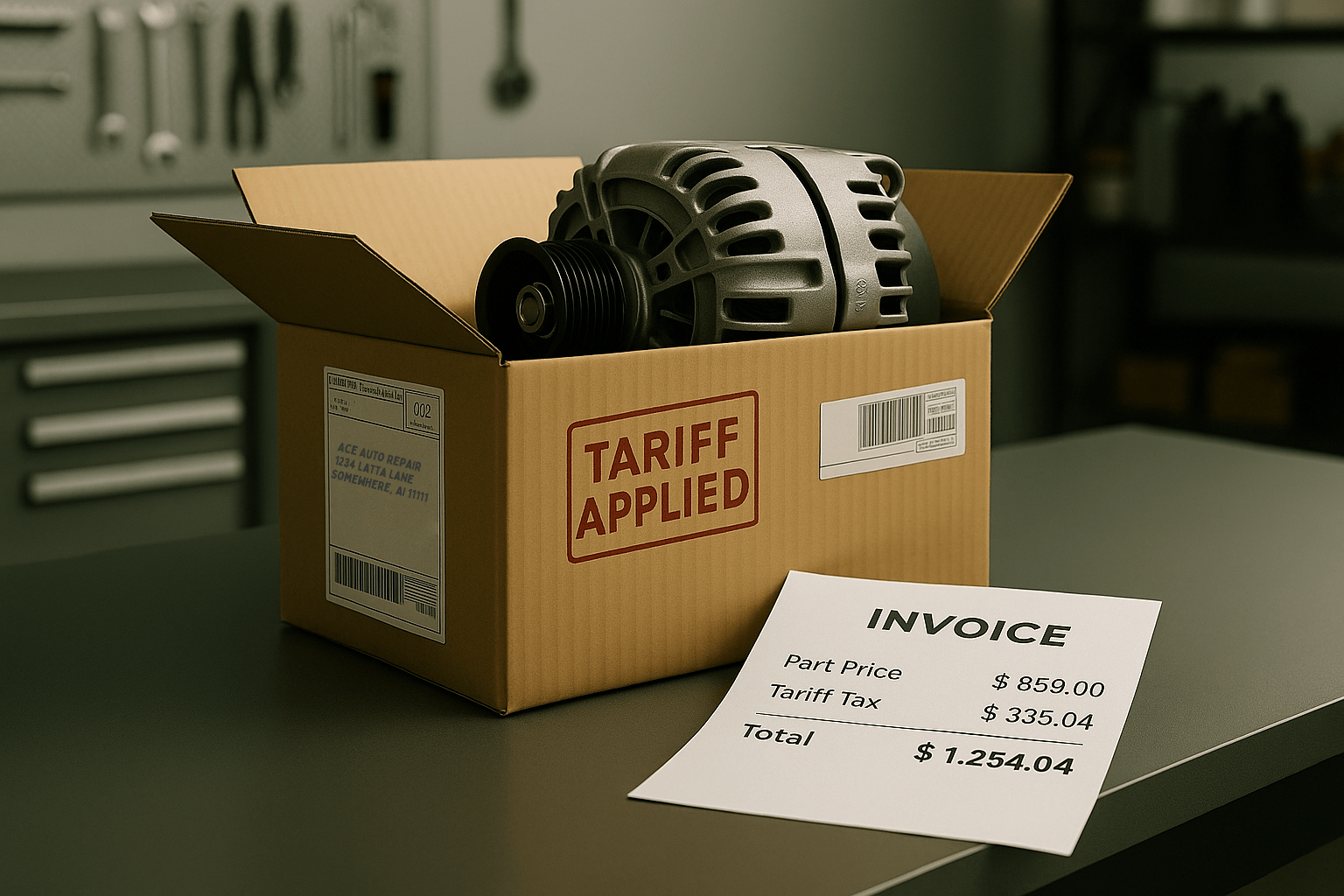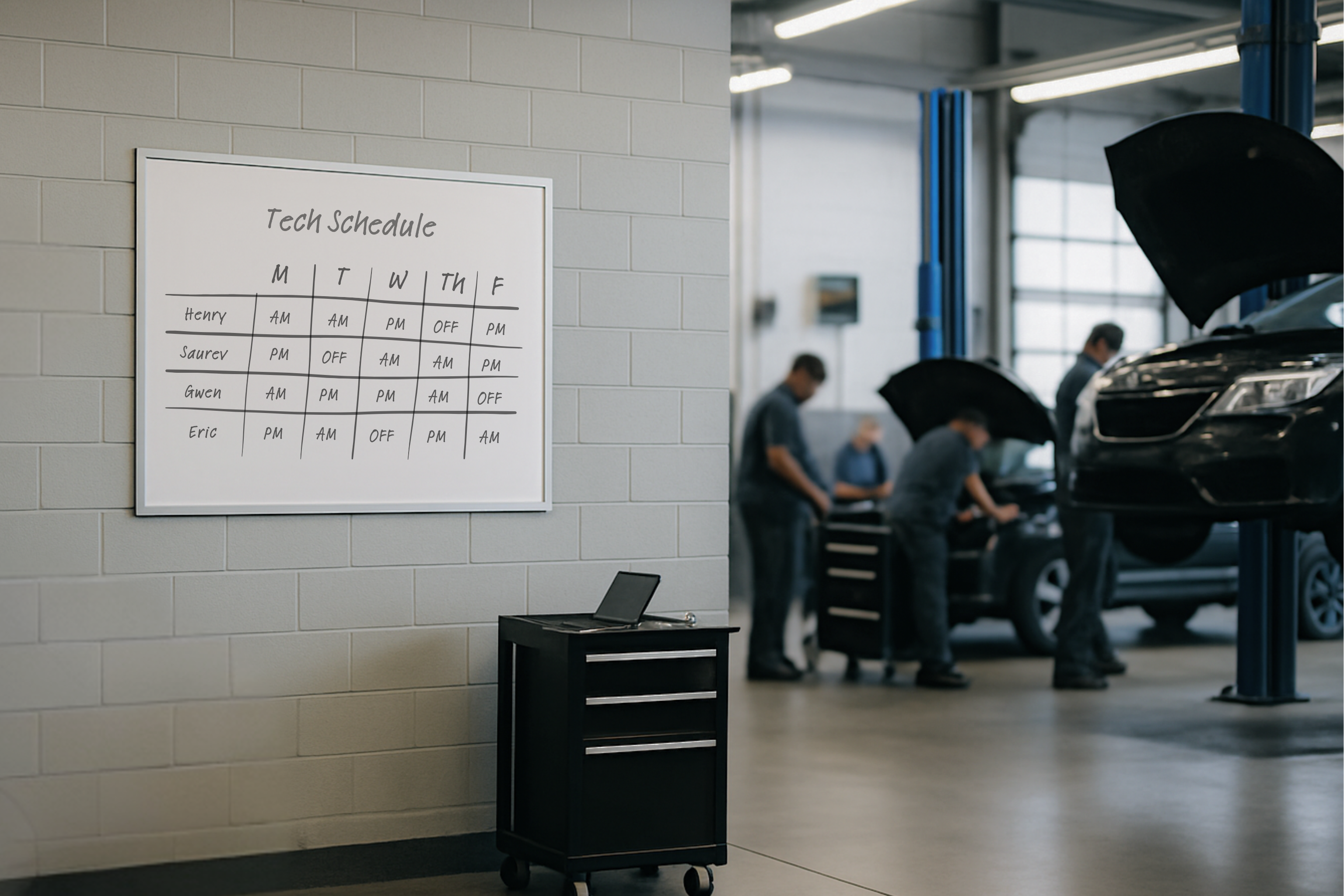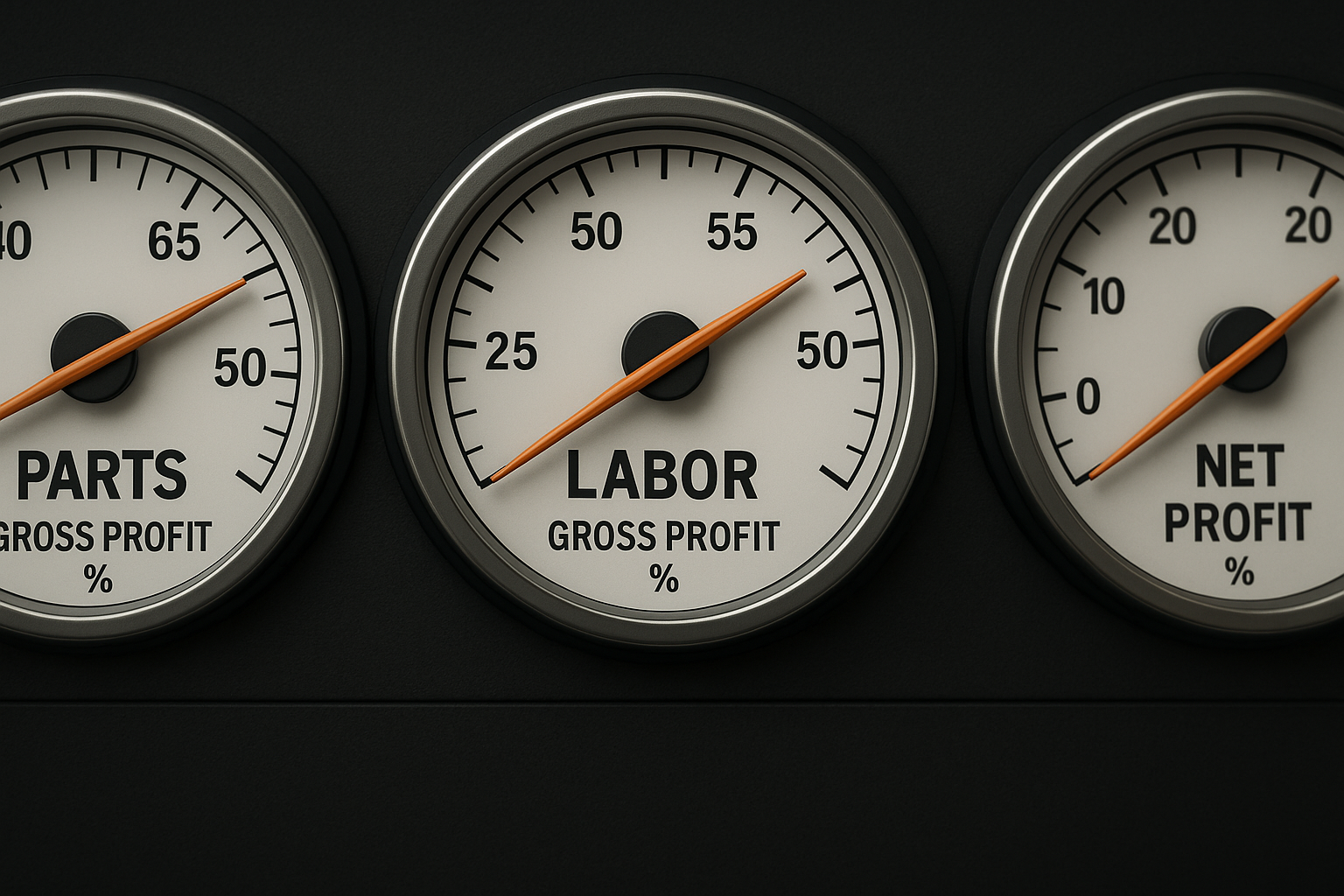How Auto Repair Shops Are Making Four-Day Workweeks Work
A lot of shop owners aren't convinced a four-day workweek can work in auto repair. You need cars in bays, techs turning hours, and steady...
4 min read
 Eric Joern
· May 21, 2025
Eric Joern
· May 21, 2025

Tariffs aren’t just political noise—they’re hitting small businesses hard, and auto repair shops are no exception. If your shop relies on imported parts, you’ve likely felt the squeeze. Rising import fees can shrink your margins, throw off your pricing matrix, and force tough calls on how to stay profitable.
In this article, we’ll break down what tariffs actually are, how they impact auto repair shops, and what steps you can take to protect your profit margins before the damage shows up on your P&L.
So let’s talk about what tariffs actually are, what they mean for your business, and how to prepare for the ripple effects before they show up on your P&L.
In plain terms, a tariff is a tax on imported goods. When you import something—whether it’s a brake pad, a water pump, or a carton of packaging material—you pay a tax to bring it into the U.S. That cost gets baked into what you pay your supplier, and it eventually ends up in what your customers are paying you.
These aren't new, but the scale and speed of recent tariff changes are. We’ve seen rates jump from 3% to 80% on some items. That’s not a minor adjustment—that’s a margin killer if you’re not prepared.
When the cost of a part jumps 20, 30, even 50%, your options narrow fast:
Eat the cost and take the hit to your margins
Pass the cost to the customer, which can lead to price resistance or lost business
Source parts elsewhere, if you’re lucky enough to have options
In auto repair, that last one isn’t always on the table. A European vehicle needs a European part. Same for many Asian models. If it’s imported, you’re likely stuck with the added cost—and now the question becomes: how do you protect your margin anyway?
If you haven’t already implemented a parts pricing matrix, it’s time.
A good matrix lets you automatically adjust your pricing based on your cost—so if a part goes from $100 to $150 because of a tariff, the markup percentage flexes with it. You're not guessing or manually changing prices. You're staying consistent, profitable, and responsive.
And here's the kicker: In some cases, tariffs can actually increase your gross profit dollars—because your markup is based on a higher cost. But only if you're tracking and pricing strategically.
🔧 Example:
A $100 alternator imported from Germany now has a 50% tariff. Your cost jumps to $150 overnight. If your markup doesn’t adjust, you just lost margin—and maybe your profit. A smart parts matrix helps avoid that.
🔎Related article: How to Price Parts for Auto Repair Shops
Yes, tariffs are disruptive. But this isn’t the time to overreact or overhaul your entire pricing structure overnight. Most shops can’t survive a 50% across-the-board price hike, even if it feels justified.
If tariffs push new car prices even higher, that’s good news for your shop. When buying new becomes unaffordable, people fix what they’ve got—and that means more repair orders, not fewer. But to make the most of that, your pricing strategy has to keep up with rising parts costs.
That’s the upside—if you're ready for it.
🔎Related article: Bulletproof Your Business—How to Thrive in a Recession
How do tariffs impact auto repair shops in 2025?
Tariffs increase the cost of imported parts—especially those from Europe and Asia. That hits auto repair shops hard, since many OEM and specialty parts can’t be sourced domestically. If you don’t adjust your pricing strategy, your margins take the hit.
Can repair shops avoid tariffs by switching parts suppliers?
Sometimes—but many OEM and specialty parts are only made overseas. If your shop services European or Asian vehicles, switching suppliers may not be an option. That’s where a pricing matrix becomes essential.
What’s a parts pricing matrix—and how does it protect your margins?
A parts pricing matrix lets you set automatic markups based on part cost. If a $100 part now costs $150 due to tariffs, the matrix updates the markup so your margin doesn’t disappear. It’s one of the best tools to stay profitable without constant manual updates.
Should auto repair shops raise prices across the board due to tariffs?
No. Drastic price hikes can drive customers away. Instead, run a parts usage report and make targeted, incremental changes based on cost increases and country of origin. This keeps you competitive without losing margin.
Can rising tariffs actually bring more business to repair shops?
Yes—if you’re positioned for it. When new cars get too expensive, people hang onto their current vehicles longer. That means more repair work for your shop—as long as your pricing strategy can keep up.
You don’t just need someone to react to what already happened. You need someone who helps you make sense of it—so you can see what’s coming and know what to do about it.
Because if your parts costs are climbing and your margins are tighter than they should be, that’s not just frustrating. That’s a signal. Every decision you make—on pricing, staffing, inventory—depends on numbers you can actually use.
Schedule a discovery call — we’ll ask questions, you’ll ask questions, and we’ll see if we're the right fit to help you plan for what’s next.
Prefer to WATCH? Tune in as Eric talks about how tariffs impact small businesses and what you can do to protect your margins.
Want more strategies for running a profitable shop?
Explore our resource center → for tools, tips, videos, and real-world advice to help you stay financially strong—even when the economy throws a curveball.

A lot of shop owners aren't convinced a four-day workweek can work in auto repair. You need cars in bays, techs turning hours, and steady...

If you've been in any shop owner forum or watched car videos lately, you've probably heard about the “Montana LLC” trick. The pitch sounds simple:...

If you’re putting in the hours but not seeing the profit you should, it’s not your work ethic that’s the problem. It’s what you’re measuring. The...